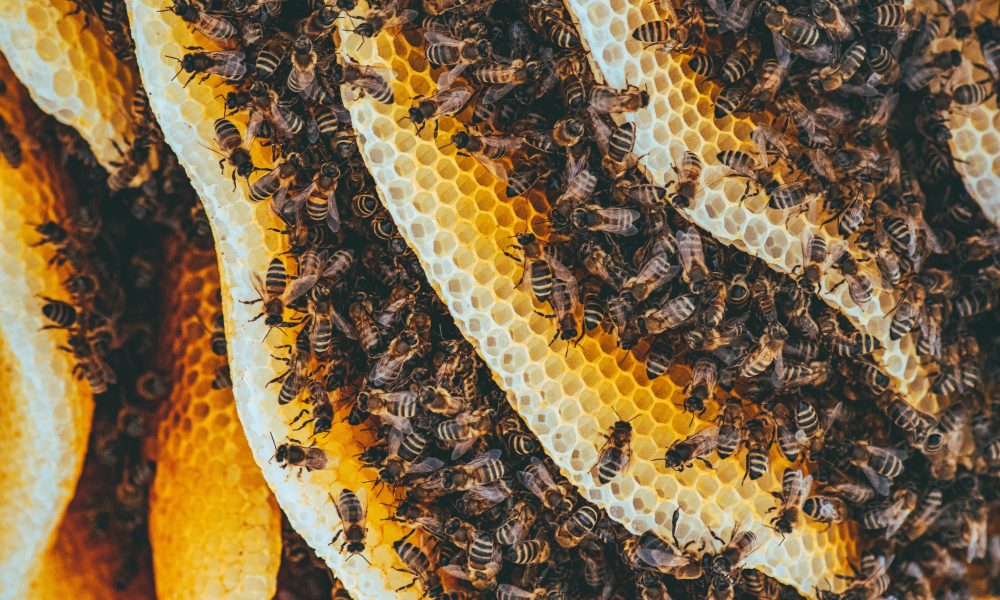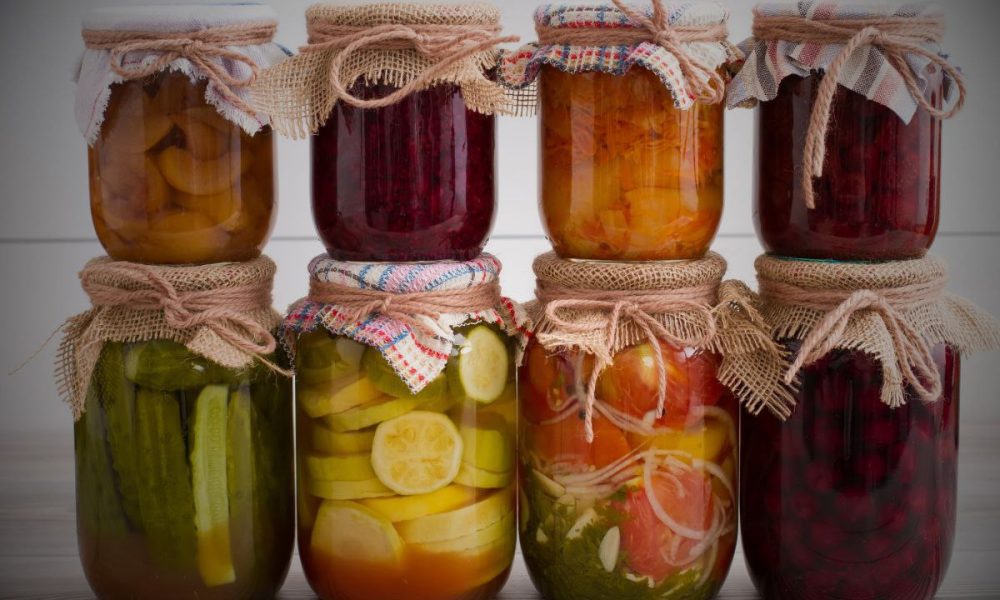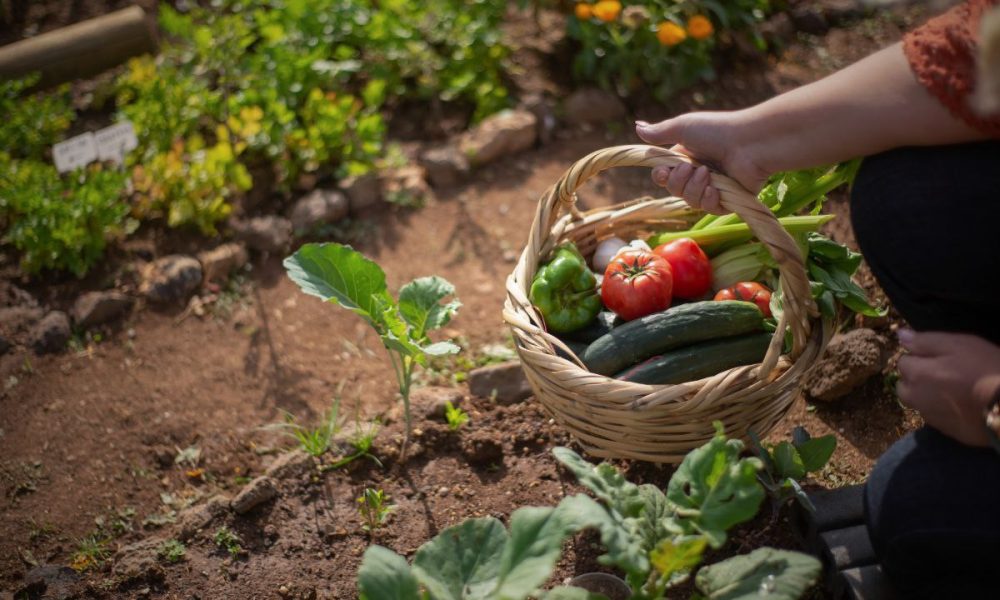By: Tiffany Jones
A Brief History
Humans originally obtained their honey through wild harvest. A cave painting located in Valencia, Spain, depicts honey harvesting dates back 7,000 years. However, the thought is, that honey and wax collection dates back around 10,000 years. Modern-day beekeeping dates back to the 18th century when Europeans changed beekeeping by the use of moveable comb hives. Before that, the colony of bees would be destroyed to collect the honey.
According to the American Beekeeping Federation, beekeeping today contributes around $20 billion in value to U.S. crop production. Some crops, like blueberries and cherries, are 90% dependent on honeybees. Honeybees are very important, helping improve both the yield and quality of many crops.
My family also has a long history of beekeeping. When my dad was younger, he would hunt for wild bees with my grant grandpa to wild harvest. They would slowly track the bees back to their hive, where they would harvest the honey. My great-uncle Jim had a large apiary which he sold in 1975 to a friend of the family. At the time of sale, he had around 250 hives, but at his peak, he had around 800 hives.
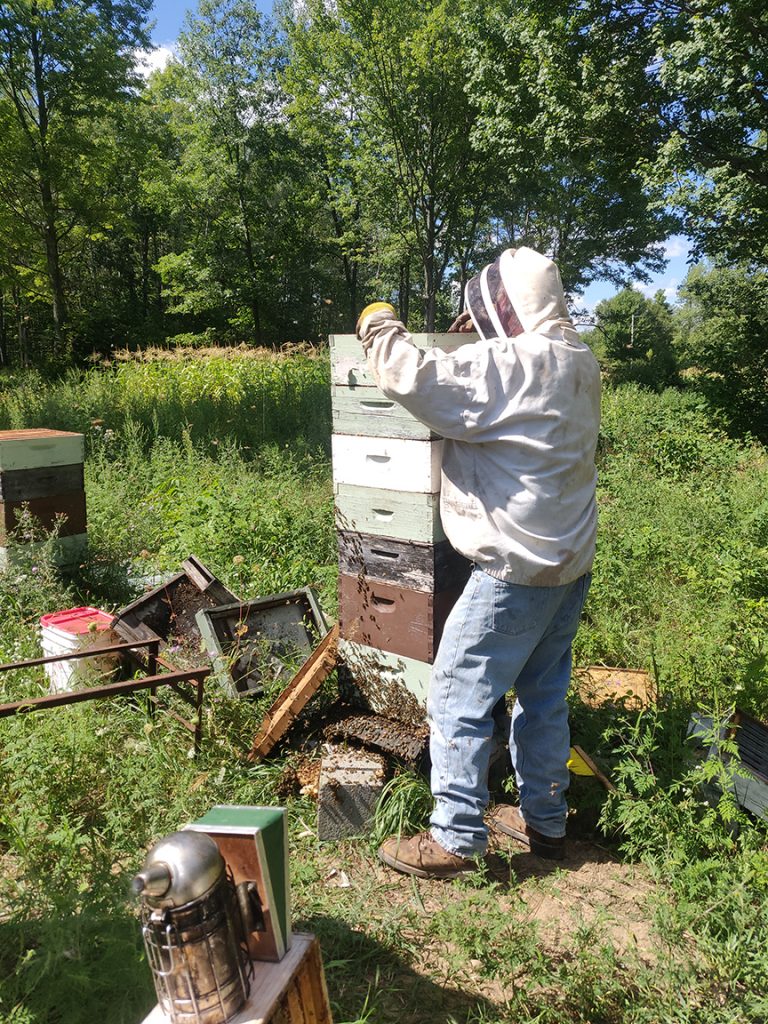
After the family friend bought the honey business, he expanded, building the business back up. My mom, sister and I would all work for the man who bought it in the late 90s and early 2000s. My mom would work in the bee yard and honey house. My sister and I would work in the honey house. When I was around 10, before we started working for a friend, my parents also started keeping their bees.
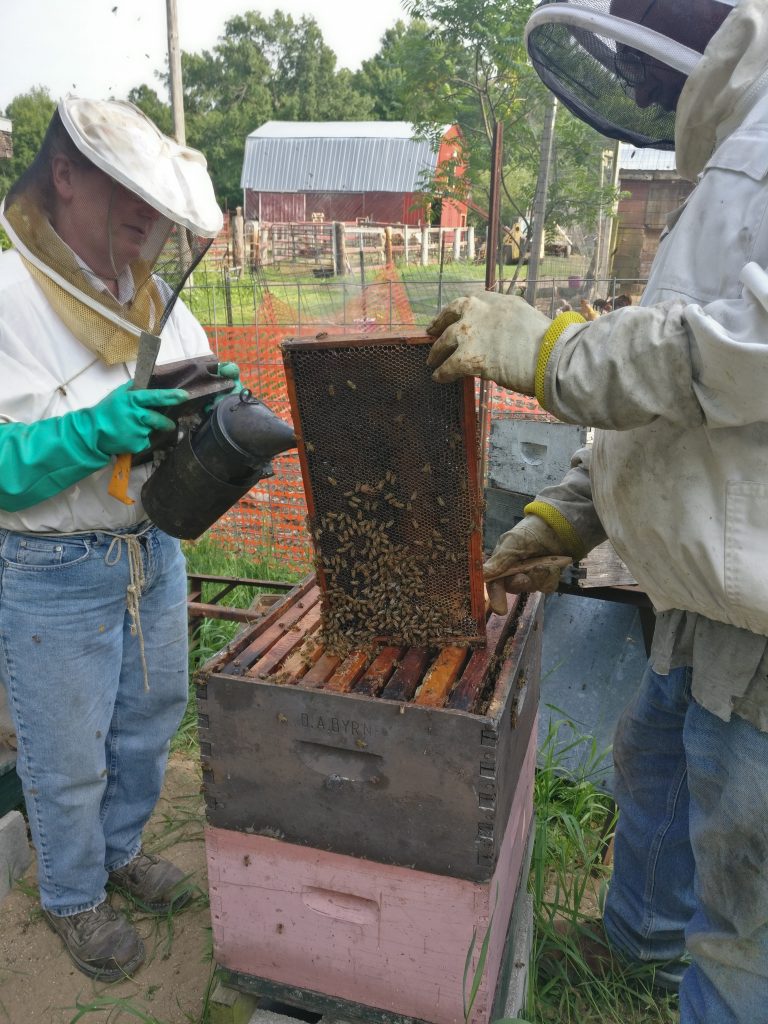
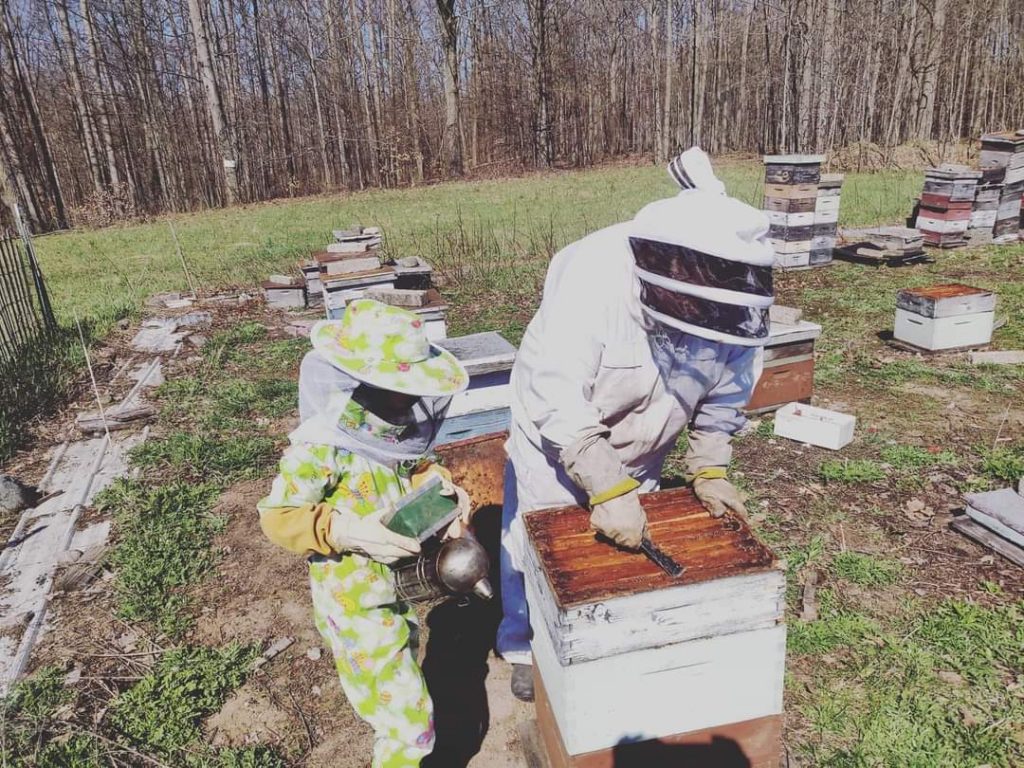
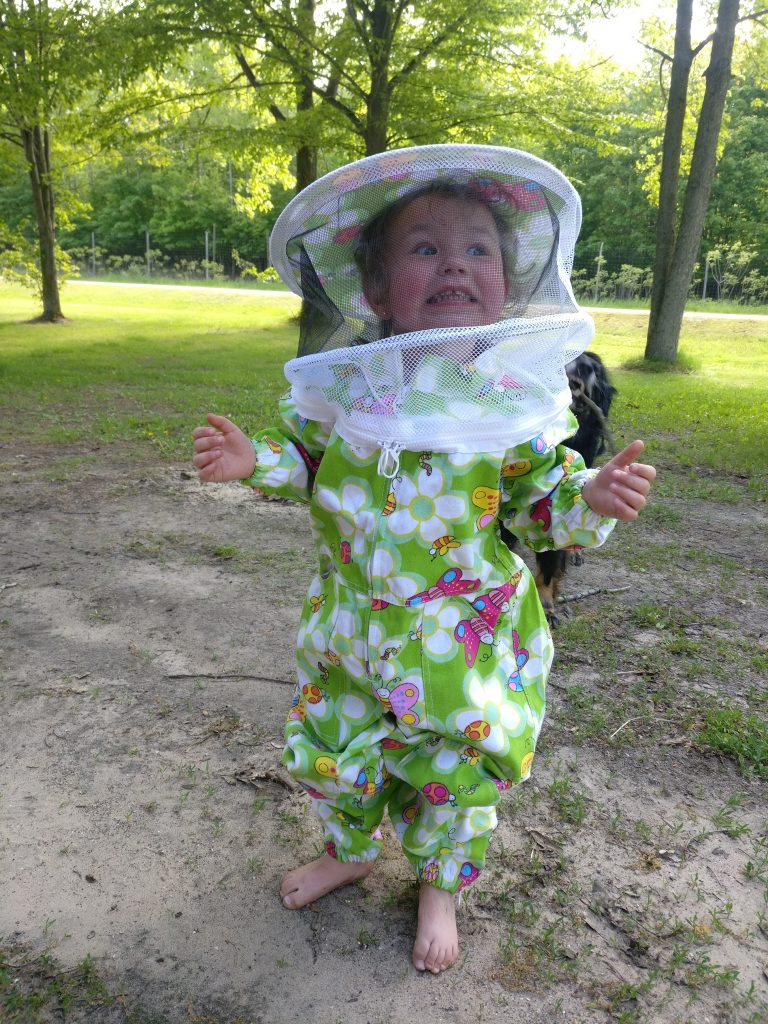
Today we keep around 15 to 20 hives in two bee yards, and the family friend is still our close mentor. Our many products at farmer’s markets are honey. We also make a range of honey infusions, including sage, lavender, orange, anise, vanilla, and cinnamon. The wax is used in candles, lip balms, and salves. The propolis is used in salves and tinctures. The goal in the future is to double our number of hives once my dad retires in a couple of years.
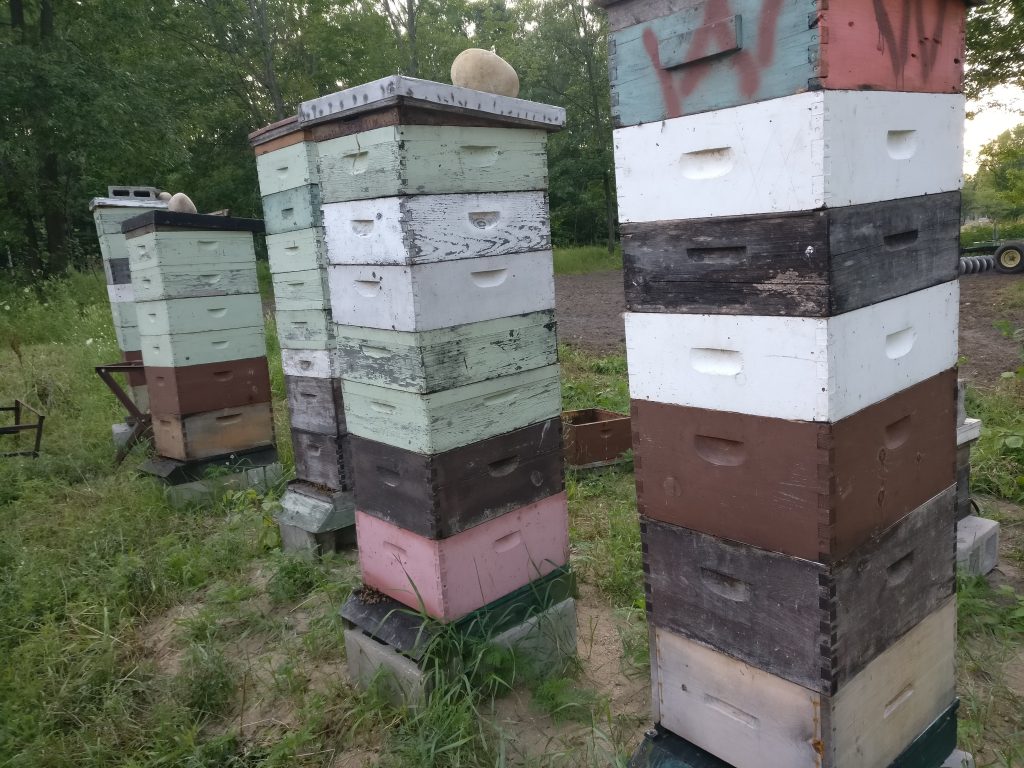
The Langstroth Hive
The Langstroth hives are the most commonly used hive in the United States and Europe. And by using the Langstroth hive, it is easier to acquire equipment that is standardized. There are two types of Langstroth hives a 10-frame and an 8-frame. The only difference between the 10 and 8 is the number of frames a box will hold. The hive itself is made of boxes stacked on top of each other and can be broken down into seven basic parts(starting from bottom to top):
Bottom Board-is the floor of the hive and provides a landing area.
Brood Chamber/Deep Supers – is where the queen lays her eggs. Most hives will have 1 or 2 brood chambers at a time. Some honey and pollen will also be stored here. These boxes are the largest at 9 5/8 inches high.
Queen Excluder – is placed between the brood chamber and honey supers to keep the queen from laying eggs in the honey supers. The worker bees are small enough to fit through, but it can slow honey production down. So, most beekeepers will avoid using it unless necessary.
Honey Supers – is where the honey is made and stored. There will be 1 or more honey super at any given time in the hive. Honey supers come in 4 different height sizes comb super (4 3/4 inches), shallow super (5 3/4 inches), medium super (6 5/8 inches), and large super (7 5/8 inches).
Frames – are used for structural support to help the bees maintain a well-structured honeycomb. They are put into both the brood chamber and honey supers. Frames come in wood and plastic, but bees always seem to prefer wood.
The foundation can be used inside the frames to help the bees start their honeycomb, but it is unnecessary. Although, it does help with increased honey production and keeping the hive more organized. Foundation also comes in a variety of ways, including plastic, pure wax, pure wax wired, and synthetic foundation.
Inner Cover – creates a dead air space to insulate the hive against heat and cold. Some covers will also have a vent for ventilation and honey production.
Outer/Telescoping Cover – is usually a wood top covered with heavy-duty aluminum to protect the hive from the elements.
Many beekeepers will put the hive on some sort of stand/base to give support and keep it off the damp ground. These bases are commonly made from wood or concrete. Some additional equipment will also be used in the winter to winterize the hive.
Tools
There are many tools when it comes to beekeeping, but there are three I would recommend.
Hive Tool – is one of the most useful tools and, I would argue, the most essential when beekeeping. It has a multitude of uses in and out of the bee yard. It can be wedged between boxes to free them, the sharp edge can be used to scrape wax/propolis off boxes/frames, it makes a decent hammer, and there is a hole in it to pull nails.
Smoker – can make caring for a hive much easier. The smoke helps to block the pheromone isopentyl acetate, which alerts other bees to be ready to attack. There is an art to smoking because you can over or under-smoke. Also, what you use to produce the smoke is important. Natural twine works well. But I prefer to use the dried fruits from the staghorn sumac. This is what my great-grandfather used, and the bees like the scent.
Bee suit and gloves – are not a necessity but can be a good idea when first starting out. There are many factors that affect how bees will act, including weather, time of year, smell, location, and energy. It is good to be safe in a suit until you understand the hive’s nature better.
Honeybees
The European Honeybee (Apis mellifera) are amazing creator, traveling up to 3 miles in any direction to forage and using a wiggle dance to communicate. There are three members of a hive: the queen, the worker, and the drone. There is only one queen per hive, and she is the biggest bee in the hive. The hive is a reflection of her, and she is in charge. But can be replaced if the workers find her incompetent. She will live 2-7 years and can lay 1,500-3,000 eggs per day.
The worker bee is the smallest member; on average, there are about 50,000 per hive during the summer. They do everything from hive care, hive defender, foraging, and activities related to the queen. In their lifetime, which can last 22-42 days, they will make about 1/12 of a teaspoon of honey. The drone’s one mission is to mate with a queen. If he has successes, it will kill him.
Honey
Honey, also known as liquid gold, has great value as a food. It can be used in cooking, baking, or added to tea; in addition to that, it can also be eaten raw. Honey comes in many forms and flavors. The flavor can be affected by the time of harvest and the floral source/sources. For example, honey made primarily from blueberry can sometimes have a blueberry aftertaste, and basswood/linden tree honey can have a hint of mint.
Honey’s many forms:
Crystallized or Granulated Honey – is just honey that has spontaneously crystallized. It has not gone bad; it just needs to be heated to return to a liquid state. The best way to do this is a warm water bath (do not boil). Also, do not put it in the microwave, as this will destroy the beneficial enzymes and properties of the honey. Granulated honey can also be eaten, and it just has a different texture.
Raw Honey – has had minimal to no processing done to it. If heat is used, it will not be above 105-115 degrees Fahrenheit. Sometimes it will be run through a minimal strainer during bottling. But this honey will still have pollen, wax, enzymes, and the occasional bee part. Most small-scale/local beekeepers will sell their honey this way in liquid or crystallized form.
Creamed or Whipped Honey – is crystallized honey where a starter seed is used. This seed comes from a previously crystallized batch of honey and is much smaller than most naturally crystallized honey. This makes it a smoother-spreadable cream. It is lighter in color than liquid honey.
Comb Honey – is honey left in the wax comb. It is harvested by cutting the comb out of the frames or by using special frames. This is a lot more work for the bees because that have to draw out the comb every time. Normally the drawn-out comb would be reused, saving the bees time.
Infused Honey – is made with herbs and spices, such as mint, rose petal, vanilla, and lavender. The herbs are placed in warm honey and left in the jar for a few weeks. The herbs are strained or can be left in. I like to put the herbs in on a new moon and take them out on a full moon.
Beekeeping is a long-held tradition done all over the world. This is just a basic look at how my family keeps bees and the amazing ability of bees. If you have more questions, I can be found on the Beartaria Times app Farming Artist or Instagram as farmingartist13. The farm website is jonesmoonlitfarm.com.
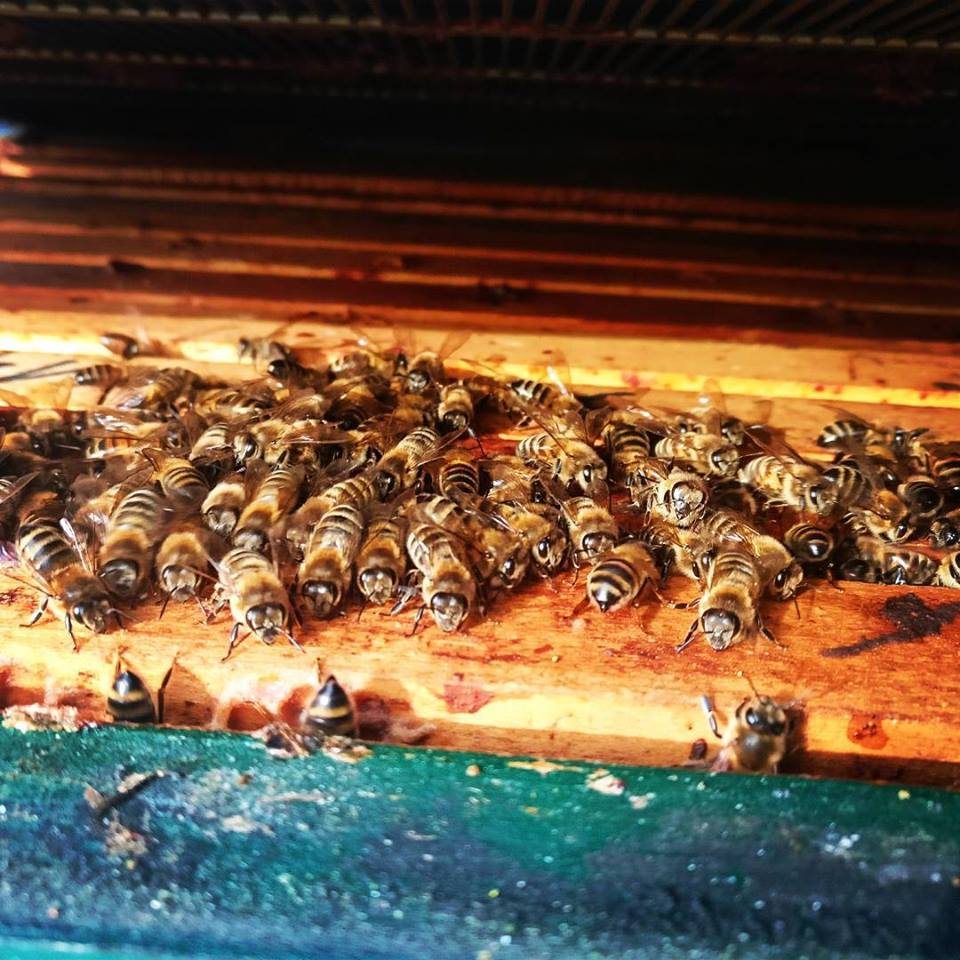
Inside of a Honeybee Hive.

Bee Yard
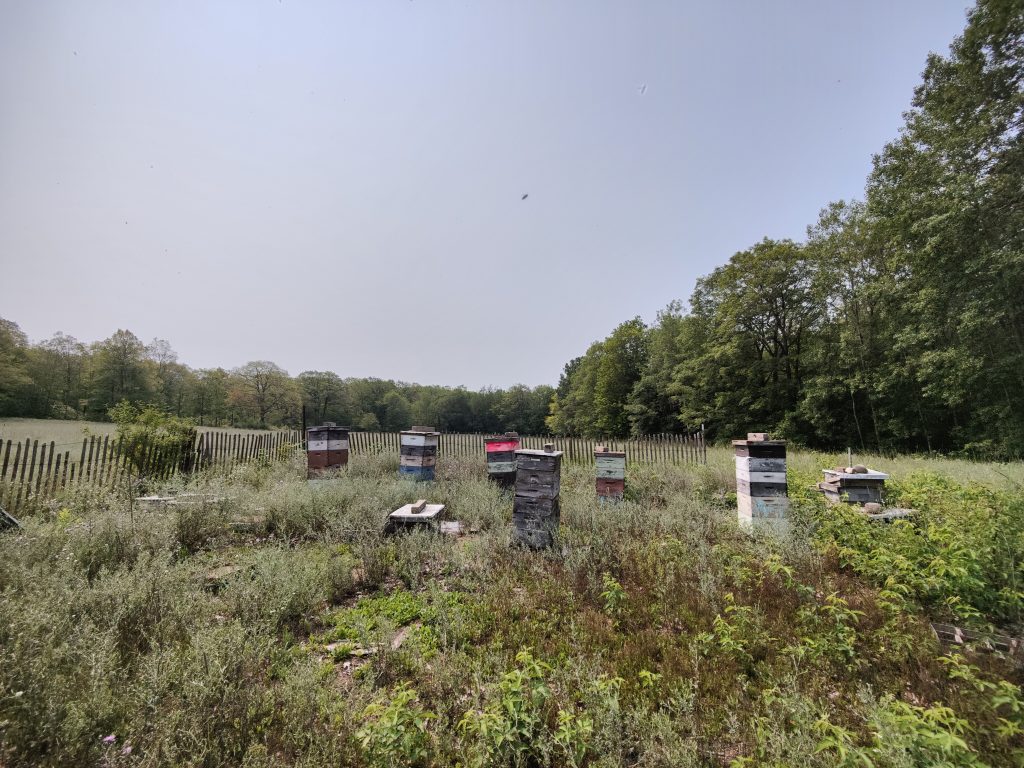
Bee Yard
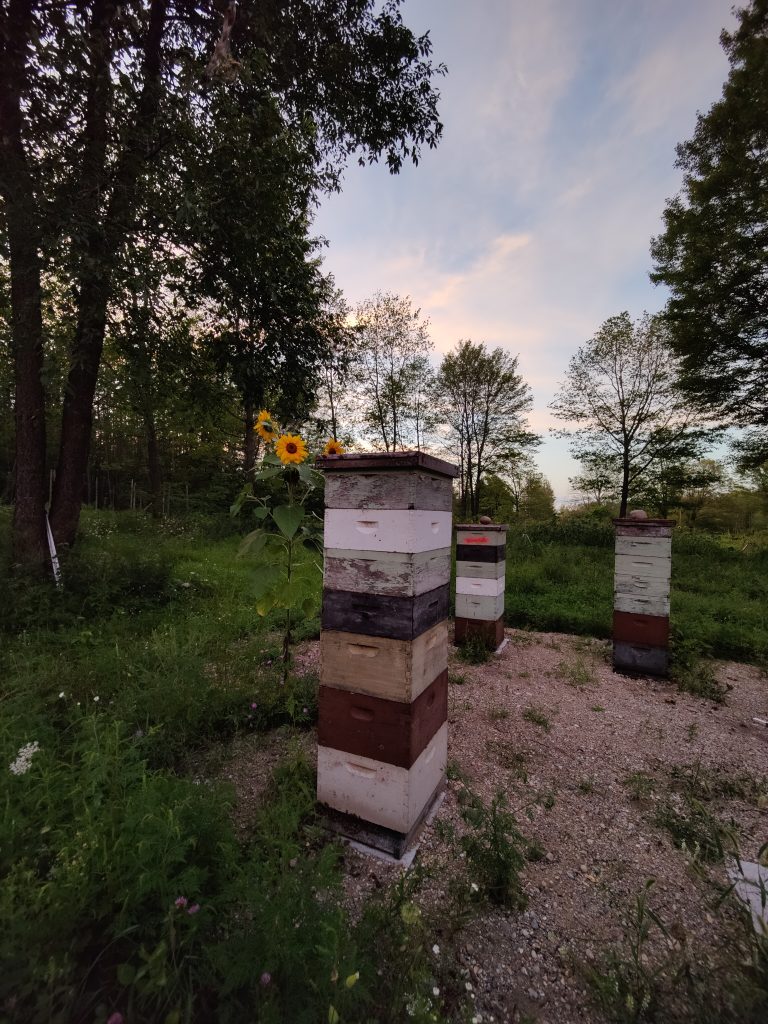
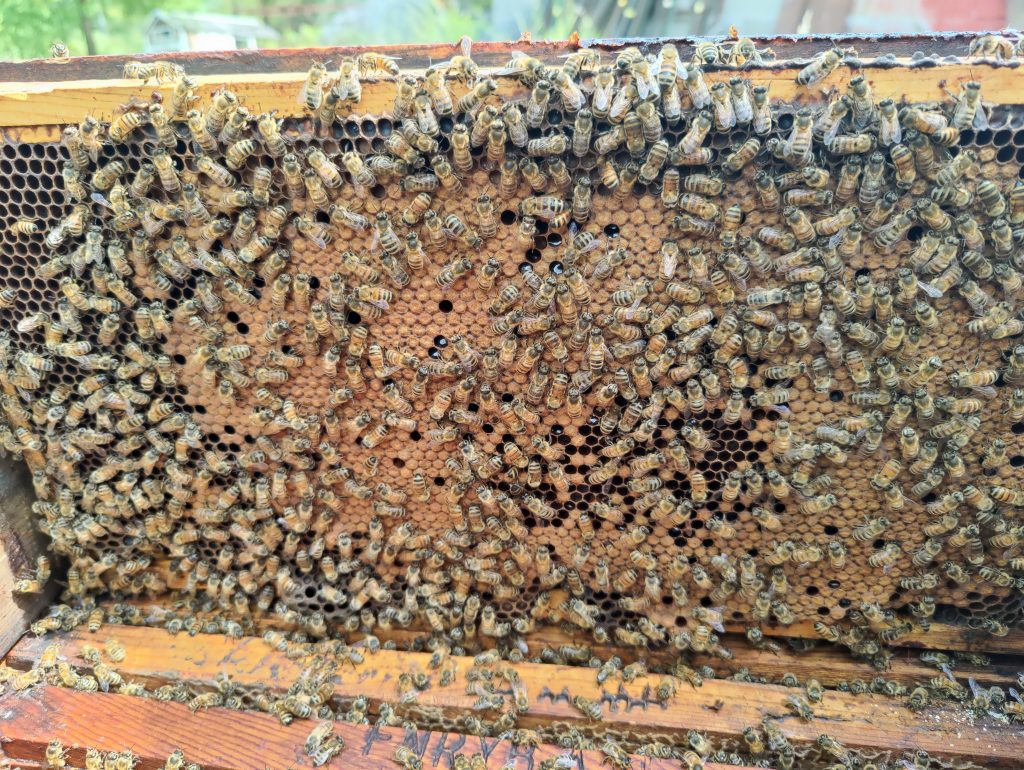
A Frame of Brood
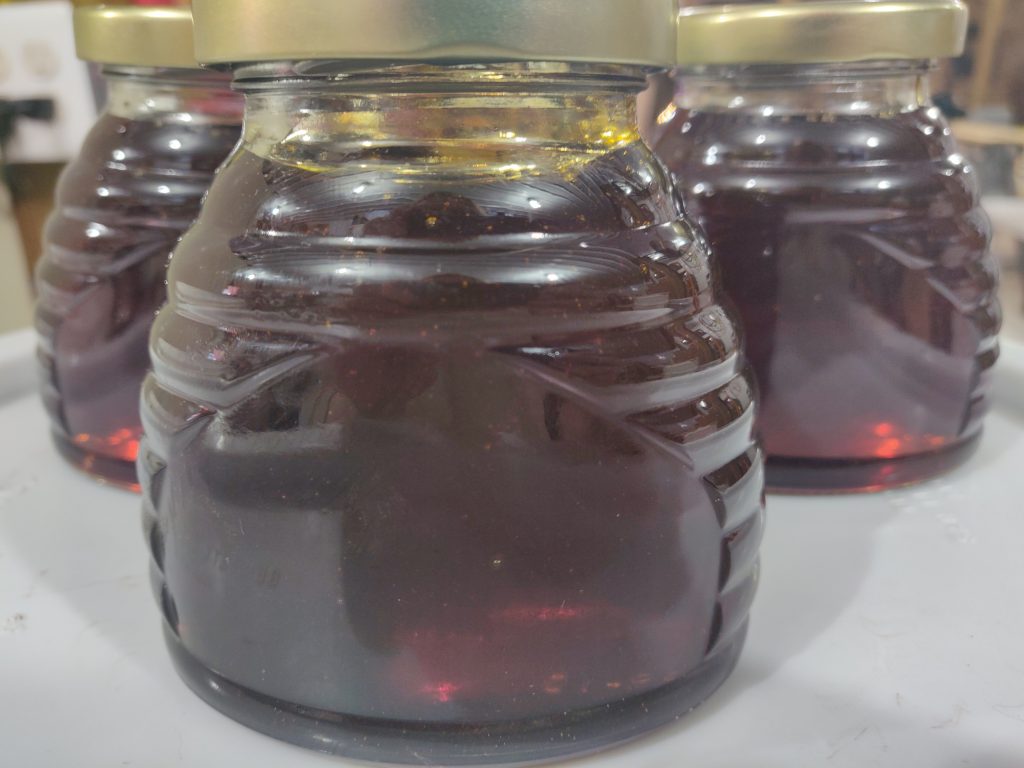
Buckwheat Honey
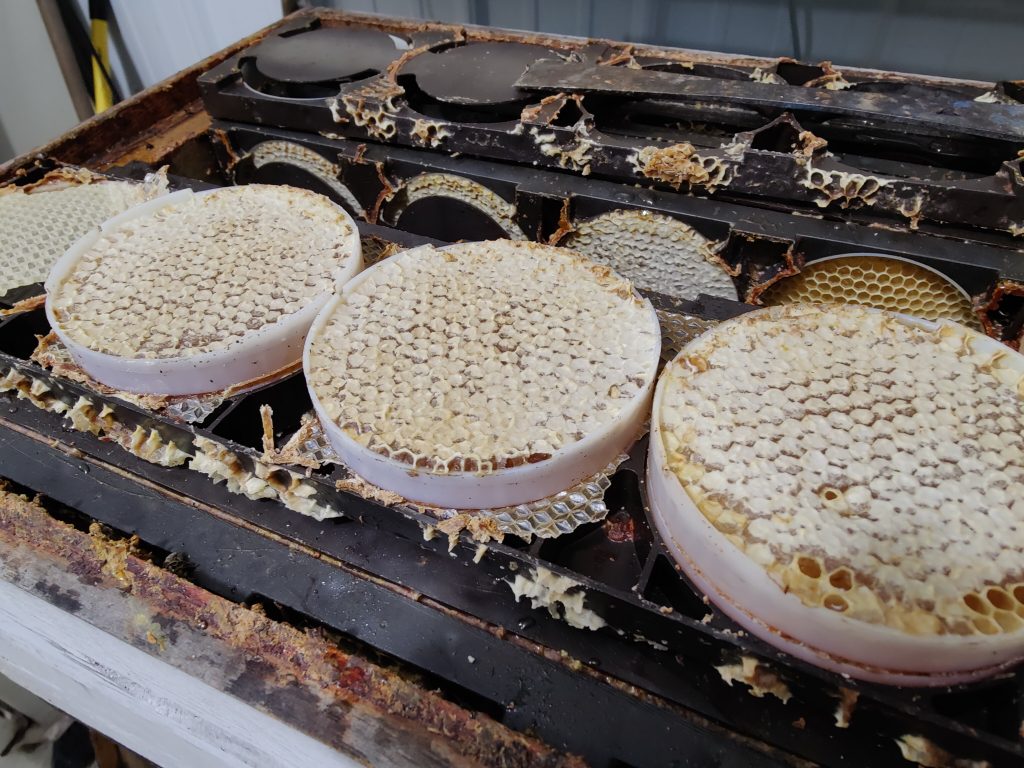
Comb Honey
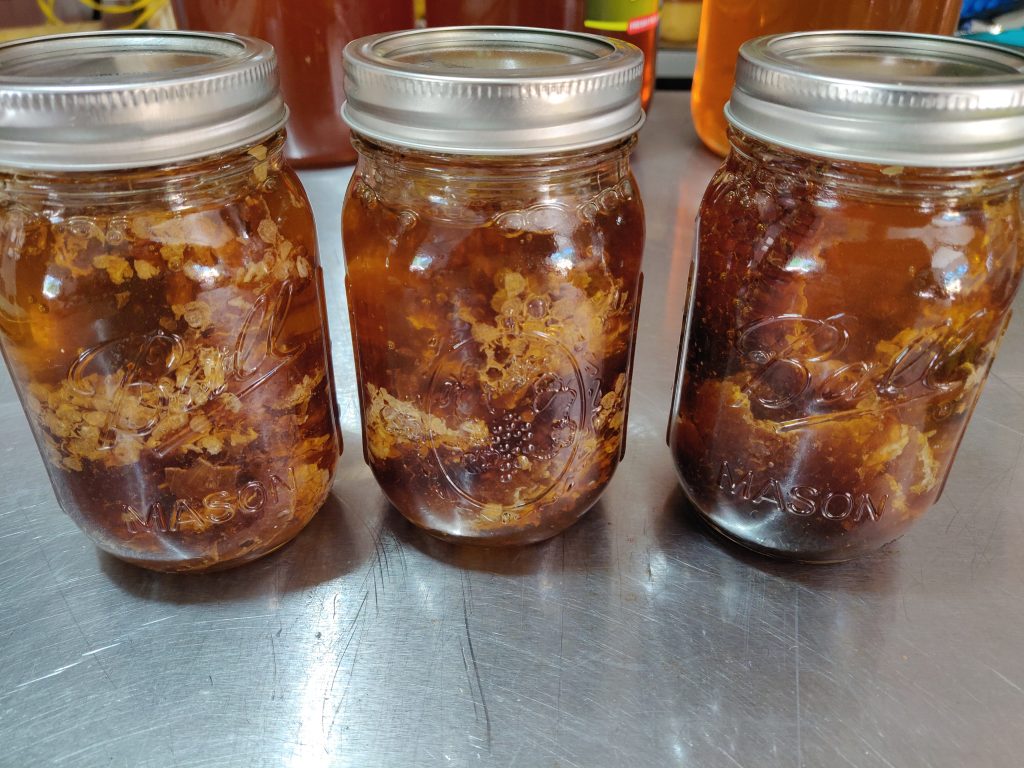
Comb in Honey
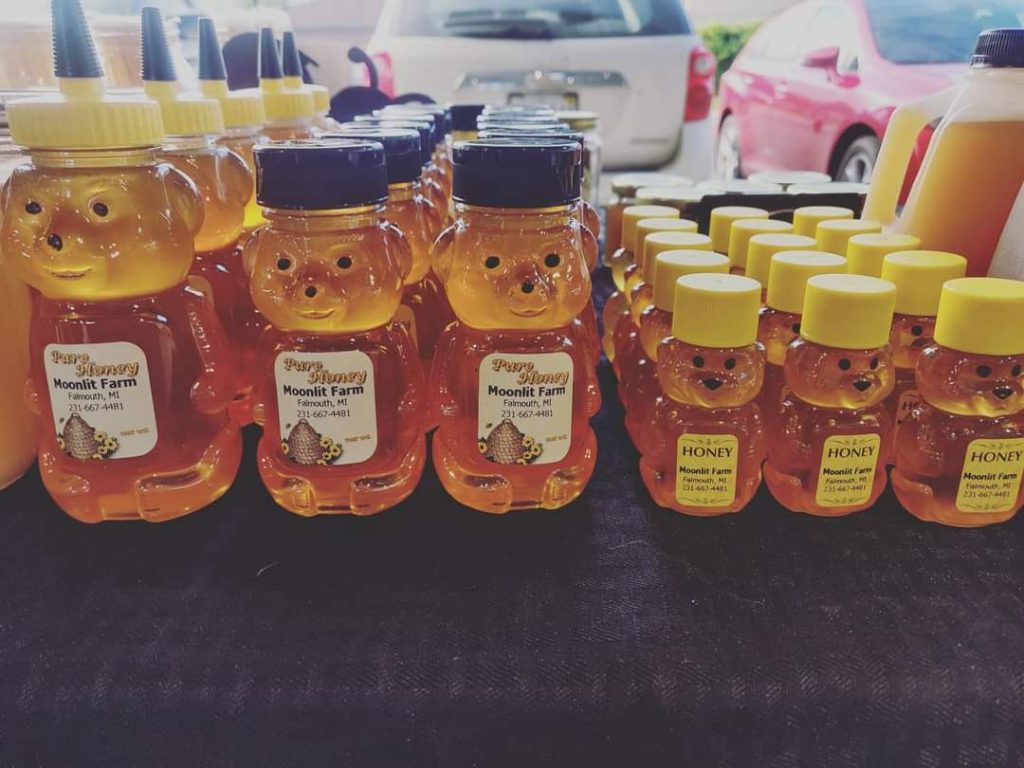
Honey Bears
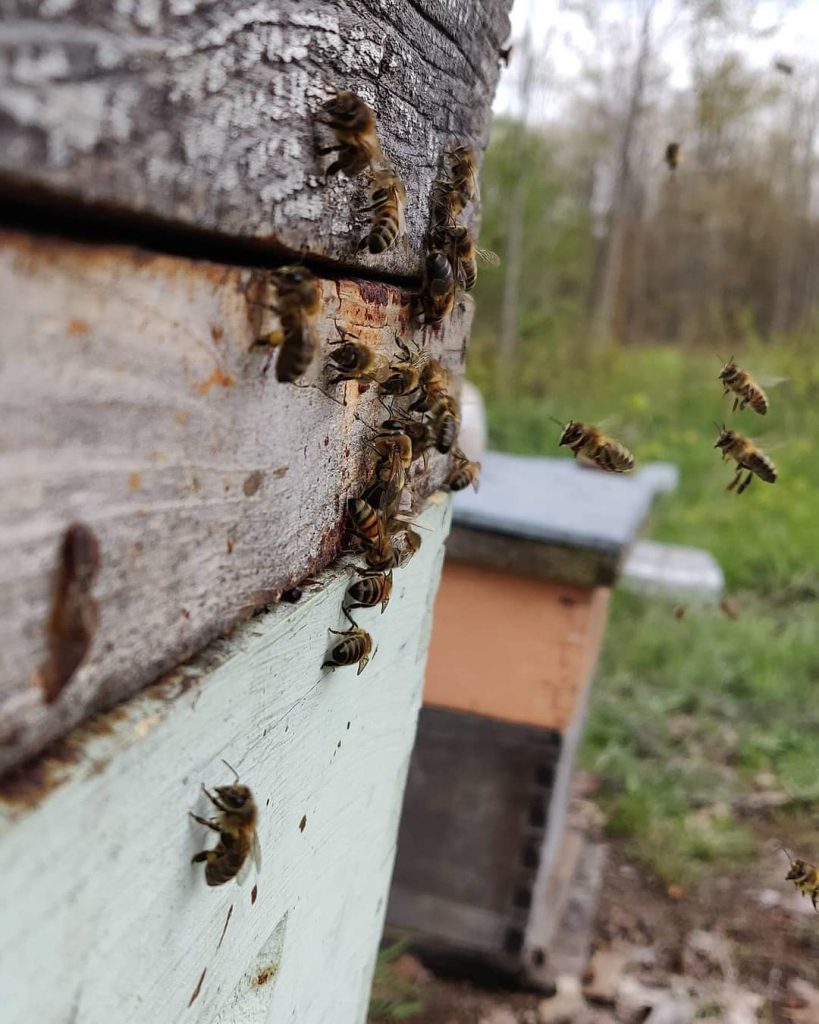
Honeybees
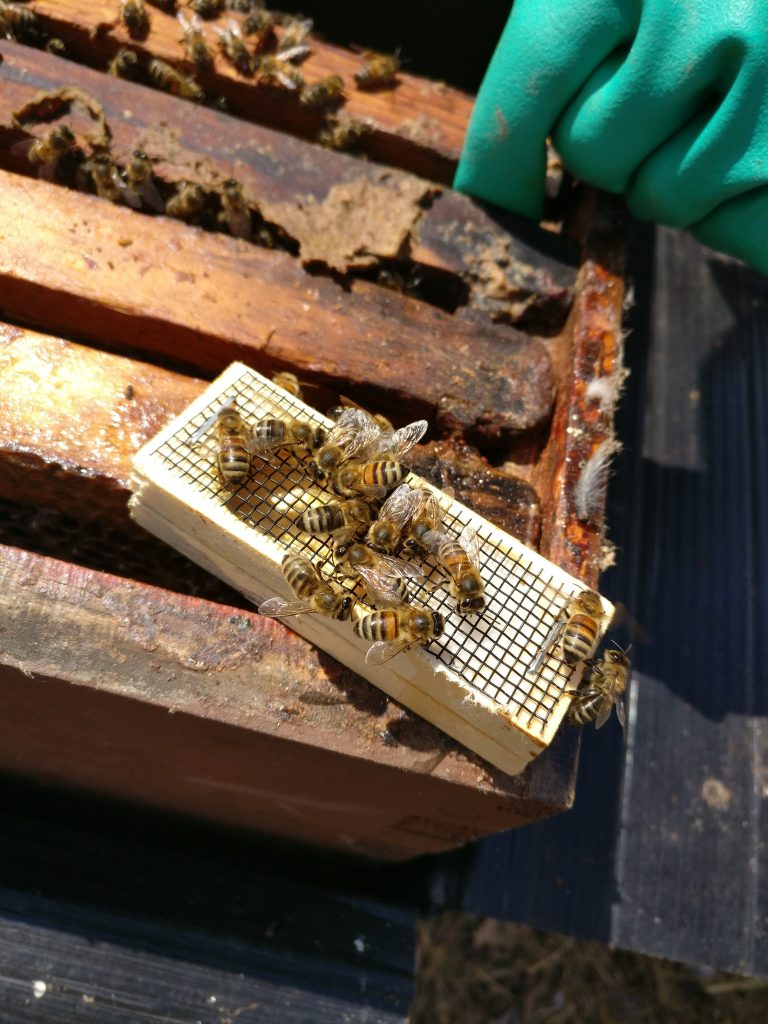
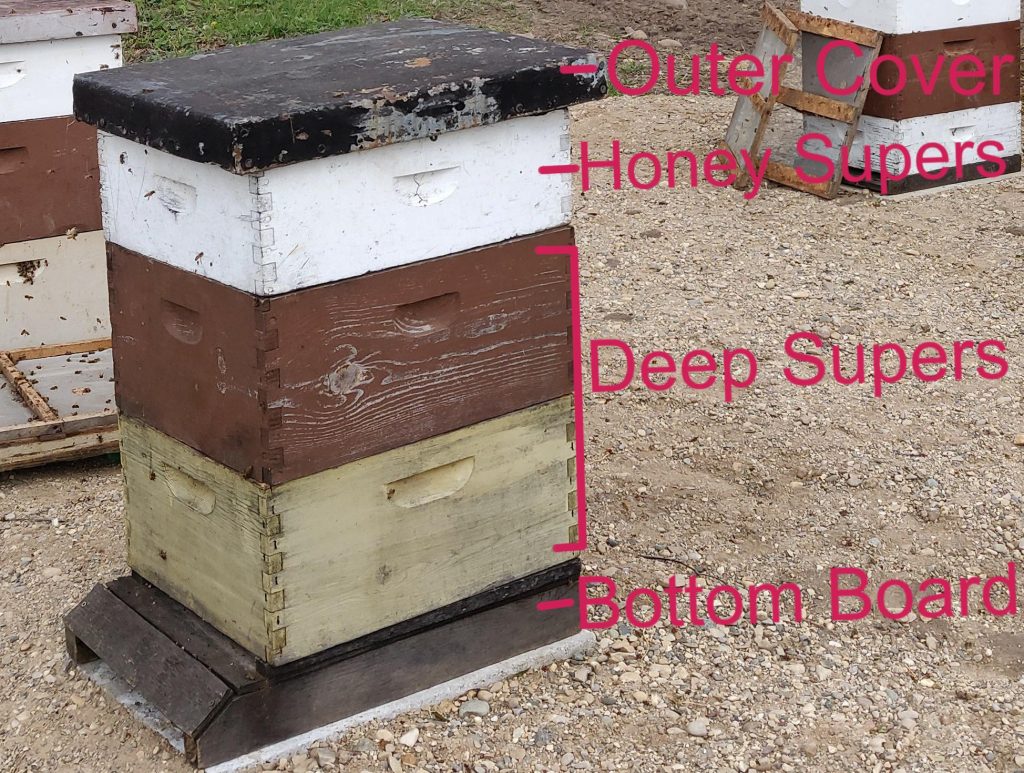
Hive Parts
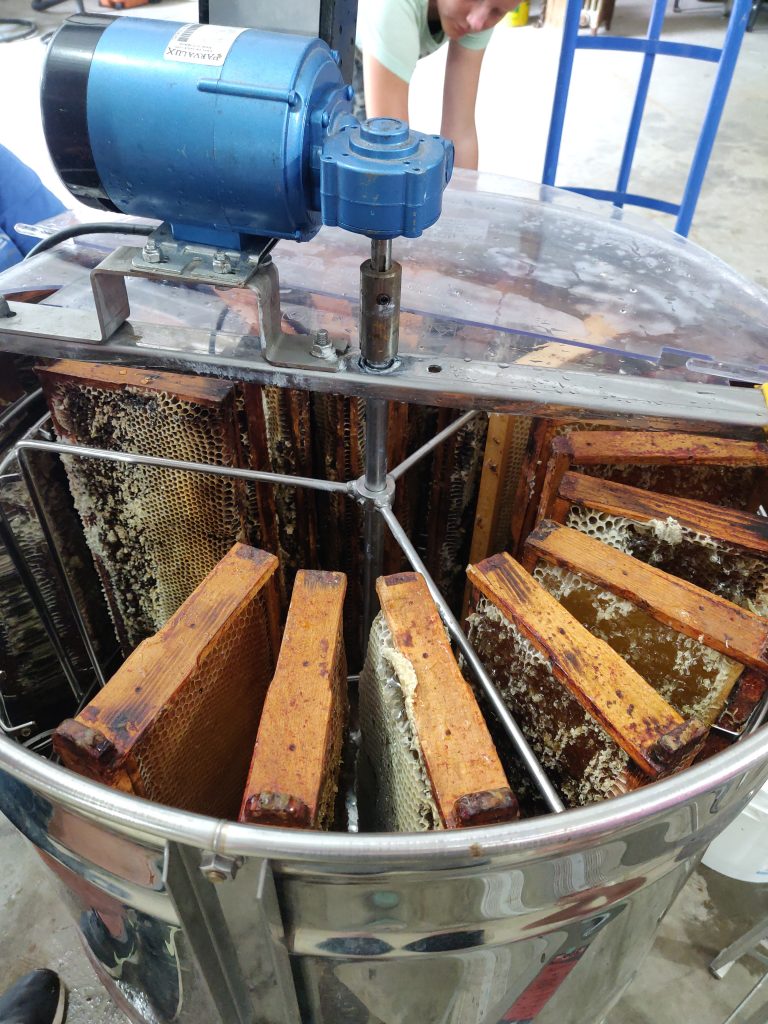
Honey Extractor
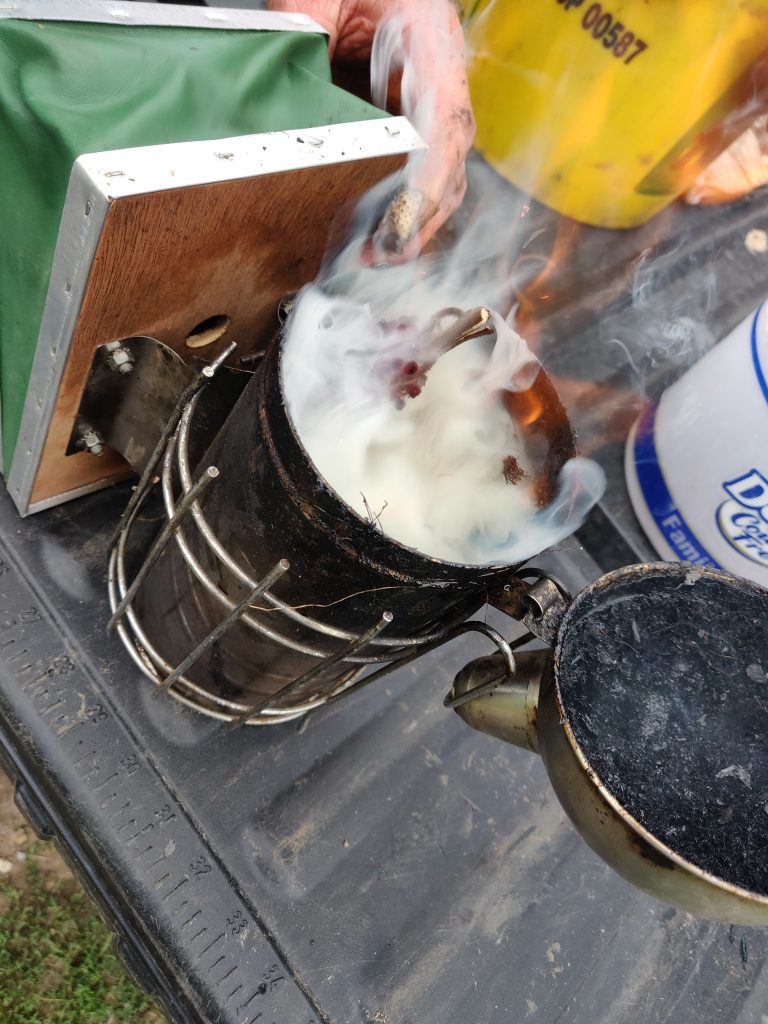
Smoker
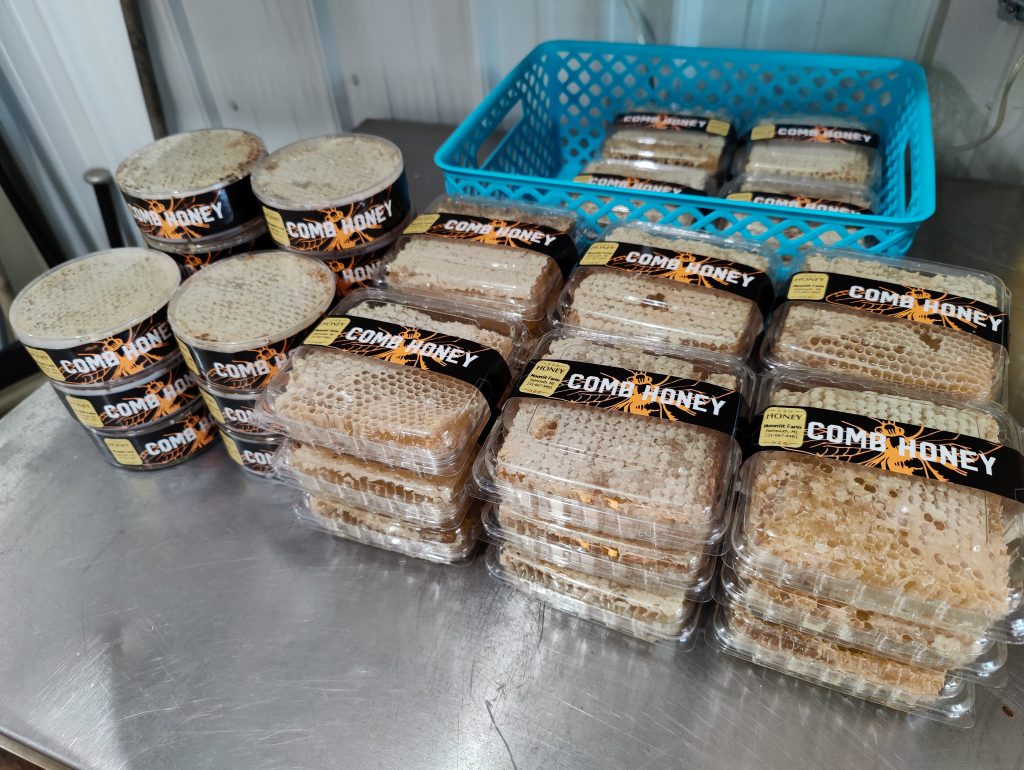
Comb Honey
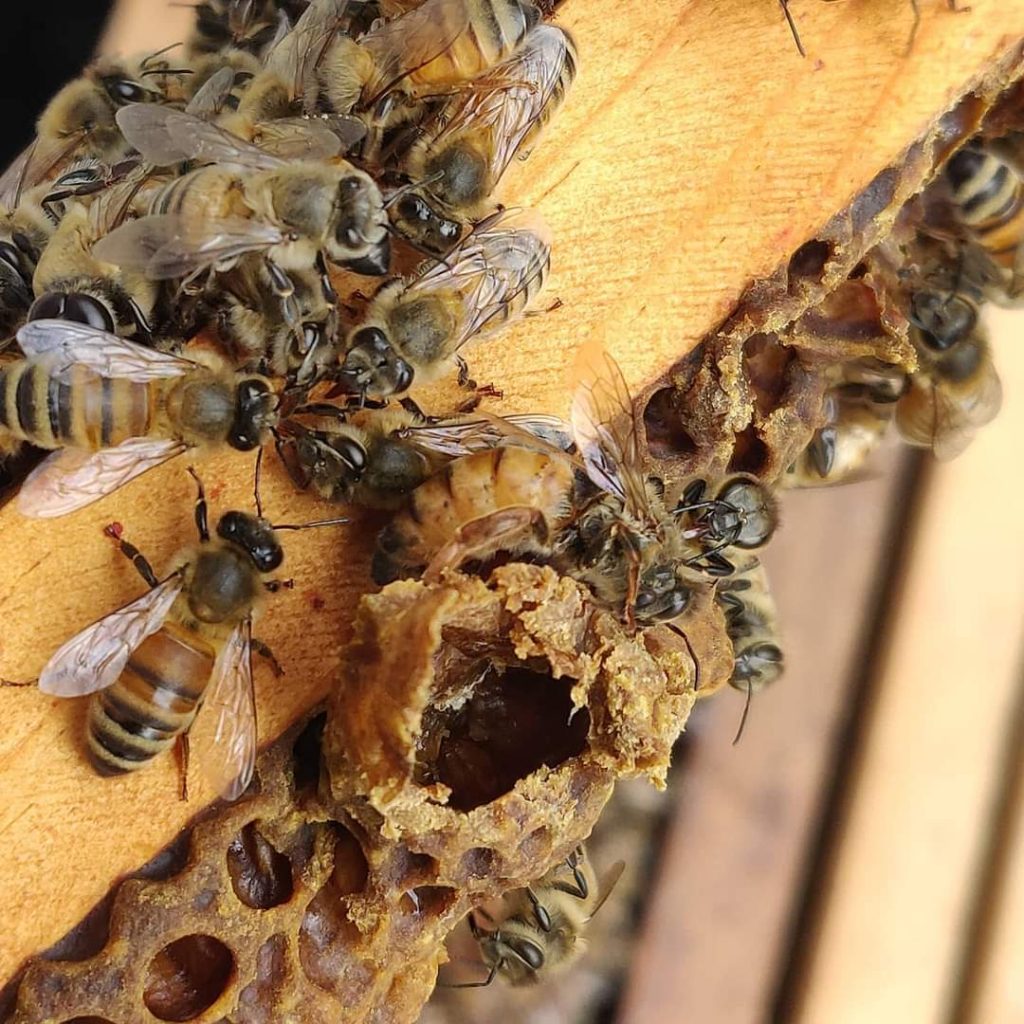
Queen bee emerging-Queen is in the center.
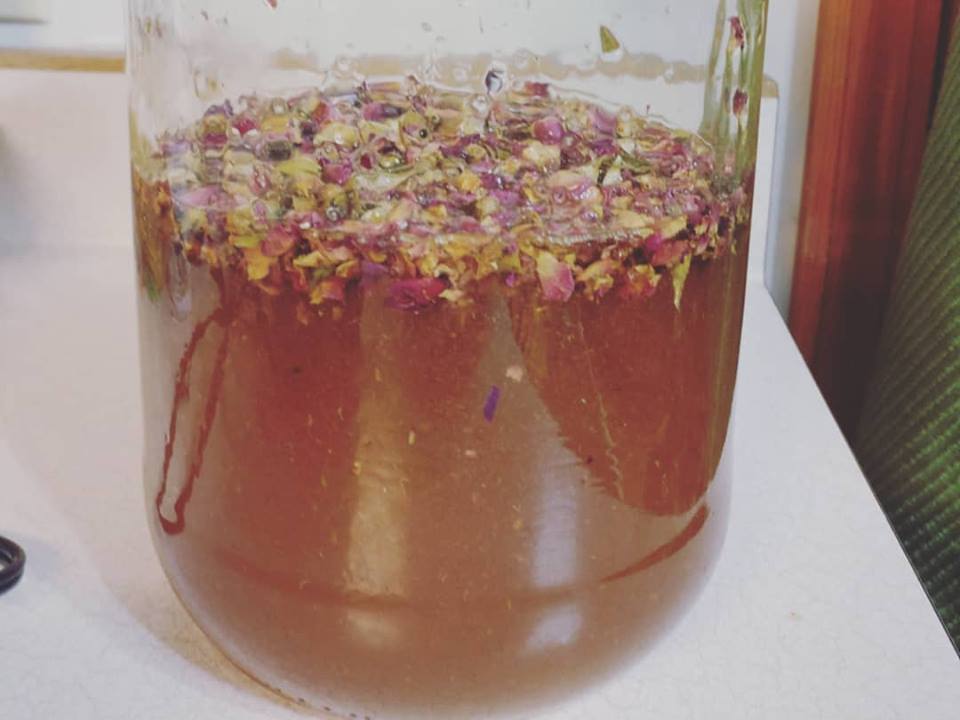
Honey infused with rose petals
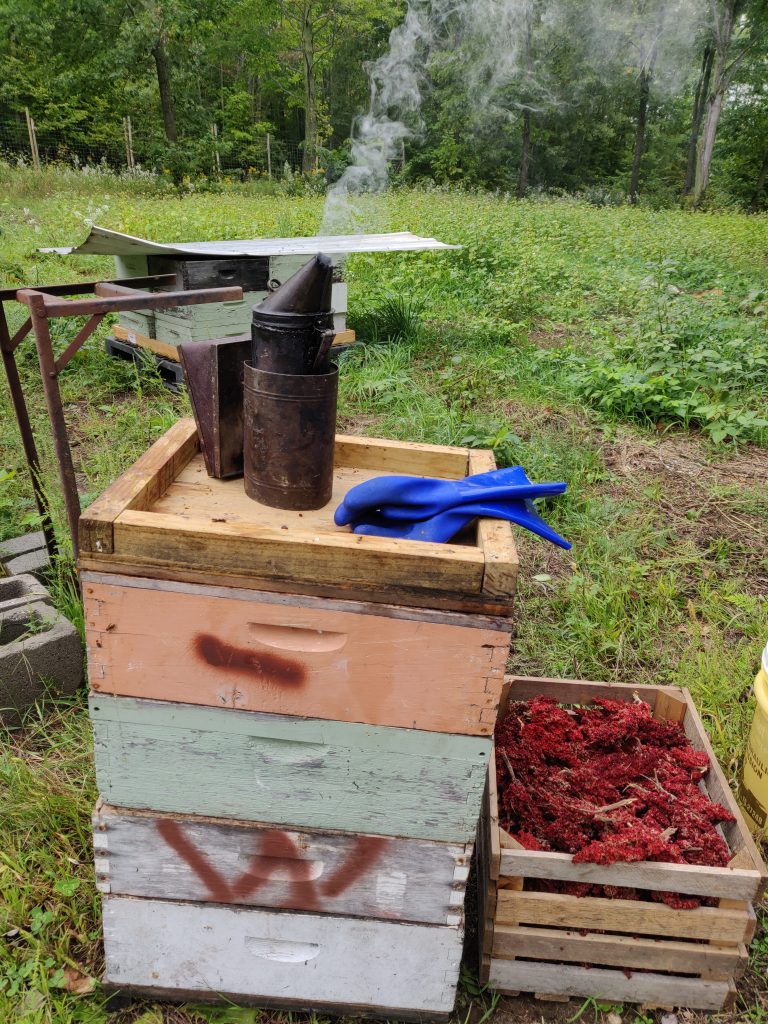
Smoker with a box of dried sumac
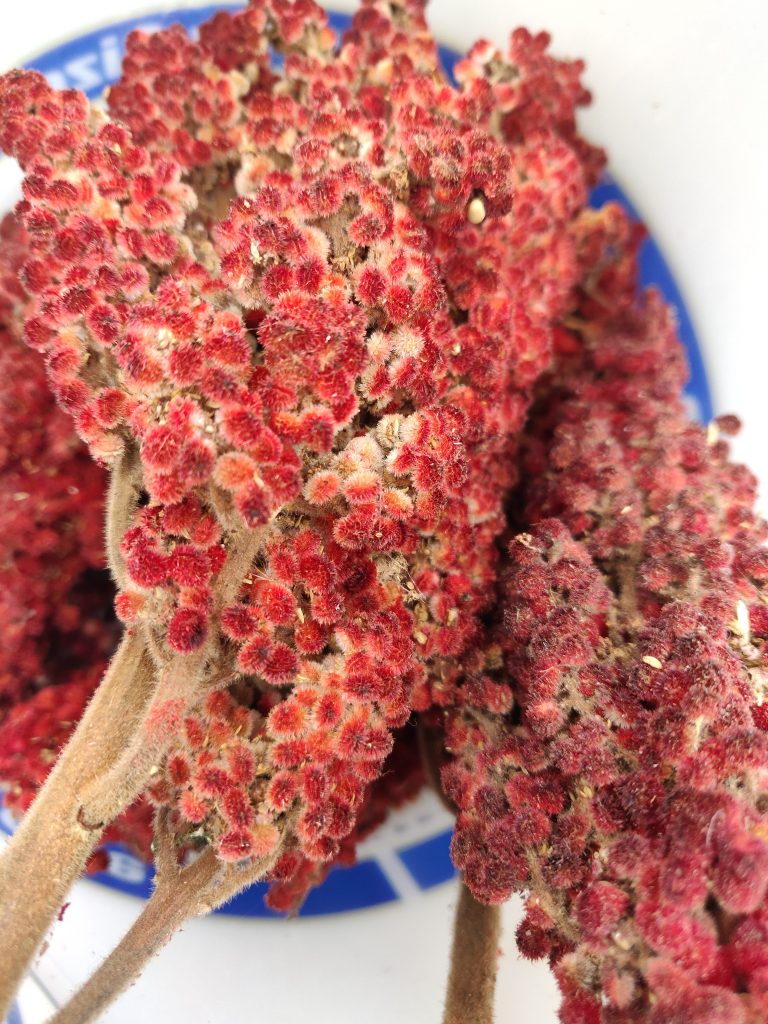
Sumac
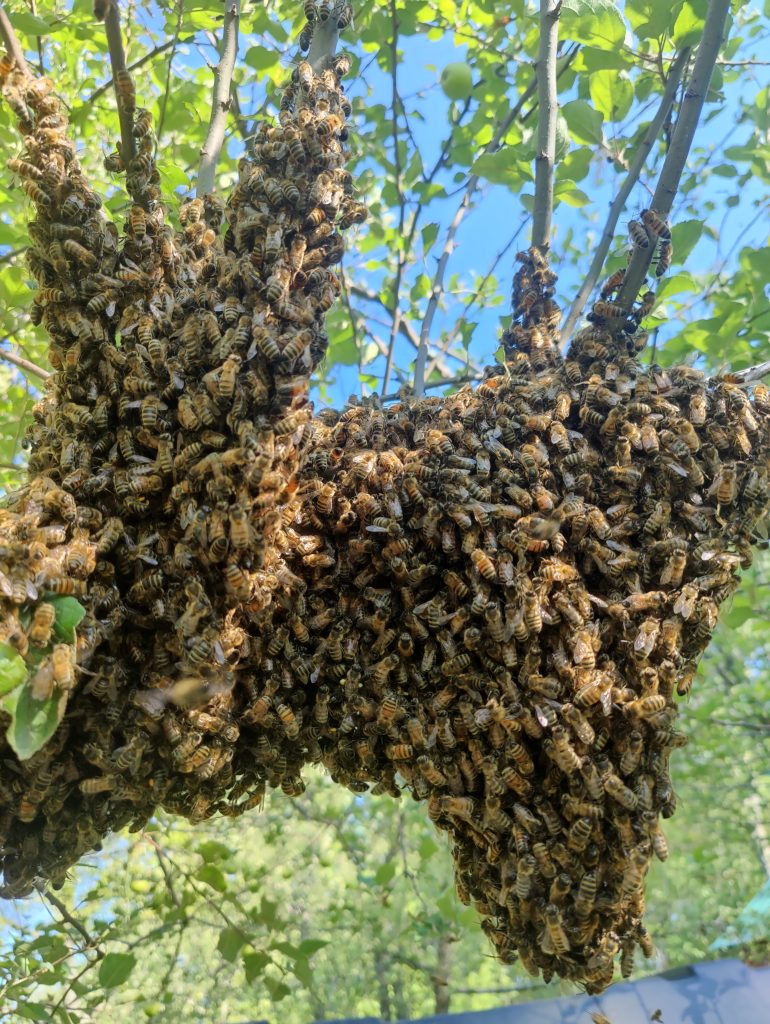
Swarm
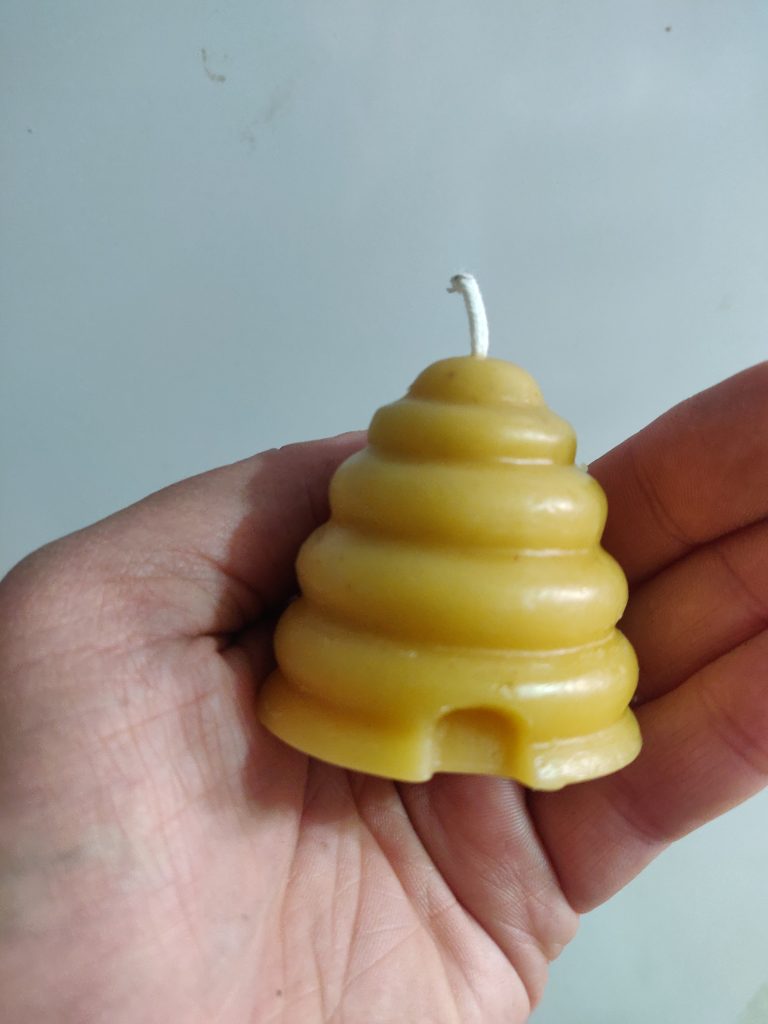
Wax Candle
